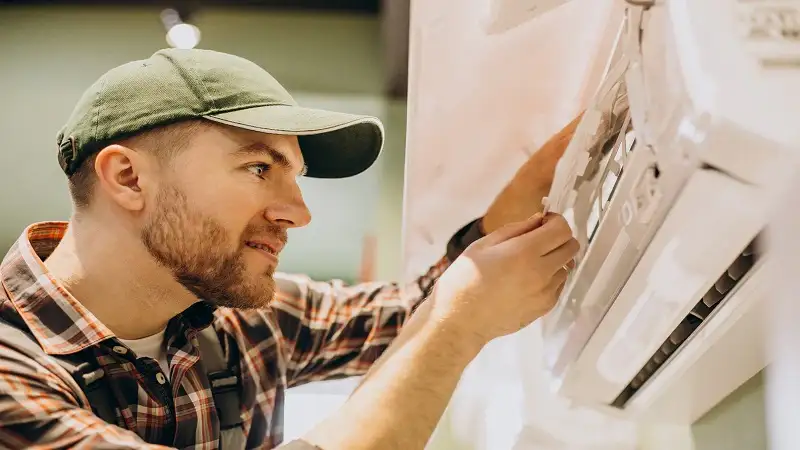Maintaining a comfortable indoor temperature while reducing energy bills is a priority for most homeowners. Your HVAC (Heating, Ventilation, and Air Conditioning) system plays a crucial role in achieving this balance. Regular maintenance not only keeps your system running efficiently but also extends its lifespan and improves air quality. A well-maintained HVAC system uses less energy, lowers costs, and reduces environmental impact. The following maintenance tips can help you ensure that your home remains comfortable and energy-efficient throughout the year.
1. Replace Air Filters Regularly
One of the simplest yet most effective maintenance tasks is replacing air filters. Dirty or clogged filters restrict airflow, making your system work harder and consume more energy. Ideally, filters should be checked monthly and replaced every 1–3 months, depending on usage and air quality. Homes with pets or residents with allergies may require more frequent changes. Clean filters not only boost energy efficiency but also improve indoor air quality and prevent unnecessary strain on your HVAC components.
2. Schedule Annual Professional Inspections
Even if your system seems to be working fine, professional inspections are essential for long-term efficiency. A certified technician can detect minor issues before they escalate into costly repairs. During a routine check, the technician will clean coils, inspect ducts, test airflow, and calibrate thermostats. Regular servicing ensures optimal performance, minimizes unexpected breakdowns, and helps the system use energy more effectively. It’s best to schedule maintenance in spring or fall before heavy usage seasons.
3. Keep the Outdoor Unit Clean
Your HVAC system’s outdoor unit (condenser) needs unobstructed airflow to function efficiently. Over time, leaves, dirt, grass, and debris can accumulate around it, reducing performance. Keep at least two feet of clearance around the unit, and trim nearby vegetation. Clean the unit’s fins gently with a soft brush or vacuum. Avoid placing objects or decorations too close to the system, as restricted airflow can lead to overheating and higher energy use.
4. Seal and Insulate Ductwork
Leaky ductwork can cause up to 30% of your HVAC system’s air to escape before it reaches the living space. This not only wastes energy but also leads to uneven temperatures throughout your home. Inspect ducts for visible cracks or disconnections, and seal them using mastic sealant or metal tape. Additionally, insulating ducts that run through unconditioned spaces like attics or basements helps maintain proper airflow and reduces energy loss.
5. Install a Programmable or Smart Thermostat
A smart or programmable thermostat can significantly enhance your HVAC system’s efficiency. These devices allow you to set customized temperature schedules, ensuring your system runs only when necessary. For example, lowering the temperature while you’re away or asleep can reduce energy usage without sacrificing comfort. Smart thermostats also learn your habits and adjust automatically, offering convenience and better control over your home’s energy consumption.
6. Keep Vents and Registers Clear
Blocked vents can force your system to work harder, leading to higher energy bills. Ensure that furniture, rugs, or curtains aren’t obstructing airflow. Vacuum dust and debris from vents regularly to maintain clean, unobstructed air circulation. Consistent airflow helps distribute conditioned air evenly across all rooms, enhancing comfort while reducing strain on the HVAC system.
7. Manage Indoor Humidity Levels
High humidity can make your home feel warmer than it actually is, prompting you to lower the thermostat unnecessarily. Use a dehumidifier during humid months to maintain ideal indoor humidity levels between 30–50%. This not only improves comfort but also helps your HVAC system operate more efficiently. Conversely, in winter, maintaining adequate humidity prevents overuse of the heating system and improves overall indoor air quality.
8. Upgrade to Energy-Efficient Equipment
If your HVAC system is over 10–15 years old, upgrading to a more energy-efficient model can result in significant long-term savings. Modern systems come with higher SEER (Seasonal Energy Efficiency Ratio) ratings, advanced compressors, and eco-friendly refrigerants. Though the initial investment may seem high, newer models consume less energy, offer better comfort control, and qualify for energy rebates and tax incentives.
9. Inspect and Clean the Evaporator and Condenser Coils
Dust and grime buildup on coils reduce your system’s ability to absorb and release heat effectively. Clean coils ensure smoother heat exchange and improved system performance. You can gently clean coils with a soft brush or contact a professional for deep cleaning during routine maintenance. Keeping coils clean minimizes wear on components and reduces overall energy consumption
10. Check for Air Leaks in Your Home
Even a well-maintained HVAC system can lose efficiency if your home isn’t properly sealed. Check windows, doors, and attics for air leaks and apply weather stripping or caulk where necessary. Proper insulation prevents heated or cooled air from escaping, reducing the workload on your HVAC system. Sealing leaks can cut energy costs while maintaining consistent indoor comfort.
Conclusion
Efficient HVAC maintenance isn’t just about comfort—it’s an investment in your home’s long-term performance and energy savings. From changing air filters and cleaning outdoor units to upgrading thermostats and sealing ducts, each step contributes to a more sustainable and cost-effective home environment. By staying proactive and scheduling regular professional inspections, you can keep your HVAC system running smoothly year-round while lowering energy bills and extending the life of your equipment.

